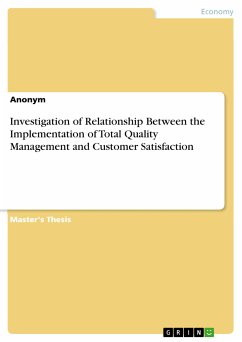Essay from the year 2004 in the subject Business economics - Business Management, Corporate Governance, grade: 1,0 (A), University of Abertay Dundee, language: English, abstract: The purpose of this essay is to give an overview of the development in management of quality over the last six decades. Today's business environment is such that management must plan strategically in order to regain market share. An aim of companies is to satisfy the customer's needs and desires before the competition will do so. Over years the direction and visions in organisations changed, one significant reason is the quality movement. This has a deeply impact of the policies, attitudes, and operations of organisations. However, the essay will discuss the four phases of quality management: Inspection, quality control, quality assurance, and total quality management. Further, there are a number of tools for management in order to reach their objectives of which some will be presented. In the early 1900s the Jobs of the employees, characterised by Taylorism, were broken down into their fundamental structures in order to increase efficiency and productivity. This division of labour formed repetitive jobs in which the employee has to work and follow the instruction of the management in order to give attention to the maximisation of the output. Only the management were setting the rules and were allowed to change the way of work through the calculation and analysis of job records, instruction cards, etc., and through time and motion studies on the shop floor (Hutchins 1985). The information system was often not standardised and informal. Further, since there was very little conversation, there was very little real recognition that each dealt with aspects of the same difficulty. Furthermore, Beardwell (1994) explained that the work was monotone, demotivating and inhumane because it offers no challenging and satisfying tasks. In the first stage, the inspection phase of development in quality management, factories determined quality by comparing their manufactured product to some master part. If the produced good did not equal the master entirely, a team of inspectors carried it out. The inspectors took samples of the manufactured parts, but could not inspect all of them. As a result, the quality of inspection was low and not very productive. The quality inspection was technical focused. For example, the mass producer of automobile Ford used a method of industrial management based on assembly line systems and caused in this time a lot of waste and the deterioration in the quality of the products was extremely high.
Dieser Download kann aus rechtlichen Gründen nur mit Rechnungsadresse in A, B, BG, CY, CZ, D, DK, EW, E, FIN, F, GR, HR, H, IRL, I, LT, L, LR, M, NL, PL, P, R, S, SLO, SK ausgeliefert werden.









